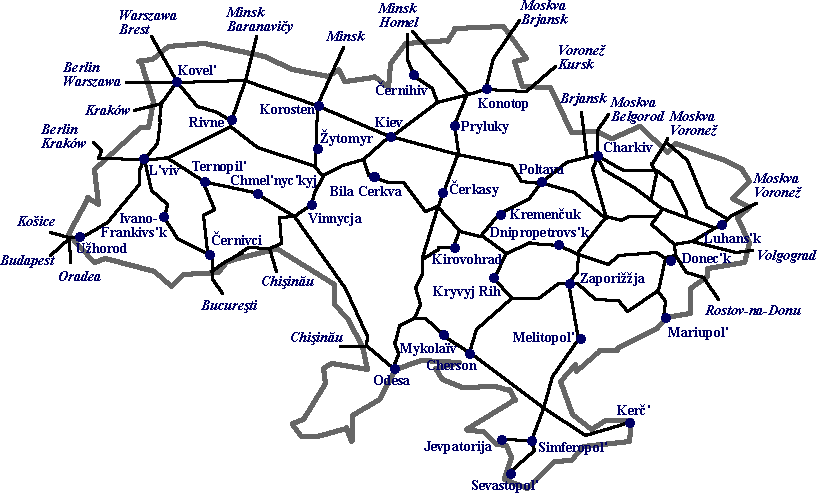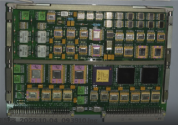You are using an out of date browser. It may not display this or other websites correctly.
You should upgrade or use an alternative browser.
You should upgrade or use an alternative browser.
The War in the Ukraine
- Thread starter SampanViking
- Start date
What you mean is that Russia can intensify its attacks and put an end to the Ukrainian defenses whenever they want, but they don't do it because they prefer to tear themselves apart, economically, militarily and humanly, just out of "good will"?......As long as they don't use the ATACMS on targets deep within Russian territory itself it is unlikely that Russia would escalate with nukes. But Russia has plenty of options to escalate the conflict if they want to. They already started destroying bridges over the Oskol river. They can also destroy the bridges over the Dnieper if they wanted to.
So we have to say that according to some, the Russians prefer that thousands of Russians die on the front, before demonstrating their true military capabilities...
how deluded...
right because whatever missiles they used they didnt have enough of them last year.They didn't blow up the bridges over the Oskol river last year either. But they did it this year.
The Russians are failing at this. Honestly, you can even see the objectives of the Russian command, but the actions of the Russian command to achieve this are very questionable. In the strike that took place in February 2023, where they targeted the Poltava oblast, there were even blackouts, but they are temporary, Ukrainian Railways reports delays in services when this happens, this only slows down the strengthening of the units formed there, but does not eliminate troop supply in Poltava, this would be completely achievable if they had already attacked any of the railway bridges in Poltava oblast:bridges over the dnieper are not the same as those over oskil. they are bigger, harder to damage, and further away. there are also a few dams that double as crossings, cant exactly blow up those. the most russia can do is concentrate on the rail crossings and destroy those to slow down ukrainian rail transport.

1 - A railway bridge in Kremenchuk: 49.051951, 33.424076
2 - Another railway bridge in Cherkasy: 49.479244, 32.039574
3 - Another bridge with a direct line to Kiev connecting with Poltava: 49.638602, 34.181466
4 - Another bridge with a direct line to Kiev connecting with Poltava: 49.838078, 33.852300
5 - Another bridge with a direct line to Kiev connecting with Poltava: 49.953357, 33.581174
6 - Another bridge with a direct line to Kiev connecting with Poltava: 49.977628, 33.015386
Destroying any bridge directly connecting Kiev to Poltava in addition to destroying the railway bridge at Kremenchuk ends any supply of troops to Poltava by rail. An Iskander in Belgorod has enough range to attack any of the 6 railway bridges, all bridges above are within missile range, plus the ship-launched Kalibr and Kh-101/Kh-22... aircraft-launched LACMs, all missiles have the range to do this. This type of air interdiction would solve many problems for Russia in Kharkiv/Luhansk, in addition to effectively delaying any viable buildup for offensives or the formation of reserves, strikes in this Poltava oblast could be even smaller because the amount of troops, weapons and supplies sent there would already decrease drastically due to the collapse of the railway bridge.

having the ordnance to reach these targets is not the same as being able to destroy them. look at how hard it has been for ukraine to take out even one bridge which is the kerch. makes no difference if you take out the bridge then it is repaired in a couple of days.The Russians are failing at this. Honestly, you can even see the objectives of the Russian command, but the actions of the Russian command to achieve this are very questionable. In the strike that took place in February 2023, where they targeted the Poltava oblast, there were even blackouts, but they are temporary, Ukrainian Railways reports delays in services when this happens, this only slows down the strengthening of the units formed there, but does not eliminate troop supply in Poltava, this would be completely achievable if they had already attacked any of the railway bridges in Poltava oblast:

1 - A railway bridge in Kremenchuk: 49.051951, 33.424076
2 - Another railway bridge in Cherkasy: 49.479244, 32.039574
3 - Another bridge with a direct line to Kiev connecting with Poltava: 49.638602, 34.181466
4 - Another bridge with a direct line to Kiev connecting with Poltava: 49.838078, 33.852300
5 - Another bridge with a direct line to Kiev connecting with Poltava: 49.953357, 33.581174
6 - Another bridge with a direct line to Kiev connecting with Poltava: 49.977628, 33.015386
Destroying any bridge directly connecting Kiev to Poltava in addition to destroying the railway bridge at Kremenchuk ends any supply of troops to Poltava by rail. An Iskander in Belgorod has enough range to attack any of the 6 railway bridges, all bridges above are within missile range, plus the ship-launched Kalibr and Kh-101/Kh-22... aircraft-launched LACMs, all missiles have the range to do this. This type of air interdiction would solve many problems for Russia in Kharkiv/Luhansk, in addition to effectively delaying any viable buildup for offensives or the formation of reserves, strikes in this Poltava oblast could be even smaller because the amount of troops, weapons and supplies sent there would already decrease drastically due to the collapse of the railway bridge.

from russias perspective, there are a few concerns about using missiles to hit these bridges:
1. are they accurate enough to hit the bridge. a rail bridge is what, 10m wide? a missile could easily miss. how many missiles do you need for a couple of them to land a hit to collapse it?
2. russia not only needs missiles to collapse a bridge, they need to be able to collapse all of them within a short amount of time, lets say within a week, to overwhelm ukraine's repair capabilities and to prevent them from being able to redirect rail traffic.
3. russia also needs to time these hits with a general offensive, because if you dont attack on the ground, then once the bridges are repaired you are back to square one.
so in order to make these attacks make sense, russia needs missiles that are accurate, needs them in enough numbers, also needs sensors that can assess damage after hit, AND they need to be able to pair these hits with a major ground offensive.
Eh no. Kh-38 is way larger than Maverick. Kh-38 is a 520 kg missile with 250 kg warhead. Maverick is a 210-304 kg missile with 57-136 kg warhead. The Kh-38 has roughly twice the weight and warhead of the largest Maverick.
For comparison the FAB-250 has 100 kg filling weight, FAB-500 has 300 kg filling weight, FAB-1500 has 675 kg filling weight. So the Kh-38 has close to the same warhead weight as the FAB-500.
Also, for comparison, the Iskander has a 480-700 kg warhead weight. Kinzhal is probably the same with regards to explosive. But it has much higher kinetic energy due to higher speed.
Thanks that explains a lot.
Footages from the front and other things.
New IL-76MD-90A delivered to Russian Aerospace. I'm not sure what the alphabet soup means, or what's the improvements or modernizations just yet.
Ukrainian launches operations across the Dniepr. However they already lost a significant portion of their pontoon support (see video on my previous post). The Ghoul drones are waiting, despite the Ukrainians launching waves of FPV drone strikes in previous days to preempt defenses.
AFU T-72B tank blown up in Avdiivka by the 1453rd MR Regiment.
Russian artillery, namely MSTA-S, destroying the usual stuff, e.g. deployment points, ammo depots, headquarters, vehicle hangers, of the AFU in the Kharkhiv region.
Another Bergepanzer destroyed. To the uninitiated, a Bergepanzer is a recovery vehicle. The Bergepanzer 3 is trying to recover a stuck vehicle when it got shot upon by the 136th Guards MR Brigade and the Osman special forces unit. This in the Orekhiv front. The stuck vehicle appears to be a T-64BV.
The Osman and the 136th again laying artillery fire on a Ukrainian troop company.
The Osman spetznaz unit assisting the artillery of the 42nd MR Division in spotting and targeting Ukrainian units in the field in Rabotino-Verbove.
Explosions are being reported in the Dnipropetrosk and Zaporozhye. These could be various strikes of some kind but more details later.
That's a field ammo depot going up there. The 88th and 123rd Brigades shelling Ukrainian positions with UAVs adjusting artillery.
Artillery of Group O at the office in Krasnolimansky.
Ukrainian FPV drone managed to film footage of a Russian Su-25 flying past it, launching flares.
Computer onboard a Kaliber missile looks outdated but the important part is that it's entirely Russian, self produced and sanction proof.
These markers are used by the AI in Ukrainian UAVs. They allow the drone to self navigate under heavy EW conditions.
A new kind of FPV drone developed by Nizhny Novgorod has been delivered to the battlefield. Unlike other FPV drones, this has a fixed wing with a range of up to 20km. It's also meant to carry out remote mining.
The first two Polish Rosomaks destroyed along with various IFVs and a T-64BV in what appears to be a convoy ambush, by the 83rd and 85th Brigades near Artemovsk. Previously posted this but this one doesn't require a Telegram login.
The Il-76MD-90A has glass cockpit and uses more modern PS-90-76 engines instead of the D-30. So it has built-in navigation and is more fuel efficient with greater range.New IL-76MD-90A delivered to Russian Aerospace. I'm not sure what the alphabet soup means, or what's the improvements or modernizations just yet.

New Il-76-MD-90A cockpit.

Old Il-76-MD cockpit.
PS-90A: specific fuel consumption 0.595 kg/kgf hr, maximum gas temperature 1640K.
D-30: specific fuel consumption 0.770 kg/kgf hr, maximum gas temperature 1347K.
So basically the engines are like 30% more fuel efficient which should directly translate into range.
Computer onboard a Kaliber missile looks outdated but the important part is that it's entirely Russian, self produced and sanction proof.
Compare this older board allegedly taken from an Iskander:

With newer board that is supposed to be taken from the Kalibr:


That large chip with silvery metallic lid and encased in light gray ceramic looks like a Russian clone of a Texas Instruments DSP. Just like I said would happen they replaced the US Texas Instruments DSPs with their own production.
Last edited:
It is a Russian DSP developed by JSC NIIET which I had already talked about. It is basically a Texas Instruments DSP clone. The TI chip was probably made in the early 1990s so it is old technology with expired patents at this point. Even Integral at Belarus can fabricate these chips.
The only reason the Russians used original Texas Instruments chips in the older board is because they were probably cheaper. But at this point it might be hard to source chips this old reliably, so they use their own.
JSC NIIET also developed ARM chips for industrial applications and a SPARC LEON core chip for space grade applications. Both these chips are way more advanced than an early 1990s TI DSP. More recently they have been developing replacements for civilian automotive chips which used to be imported.
The only reason the Russians used original Texas Instruments chips in the older board is because they were probably cheaper. But at this point it might be hard to source chips this old reliably, so they use their own.
JSC NIIET also developed ARM chips for industrial applications and a SPARC LEON core chip for space grade applications. Both these chips are way more advanced than an early 1990s TI DSP. More recently they have been developing replacements for civilian automotive chips which used to be imported.
Last edited:
Ukrainian missiles were shot down near Sevastopol on October 18. The Ukrainian army tried to strike with anti-aircraft missiles of the Soviet S-200 air defense system, converted into a strike version. The missiles were reportedly shot down by a Russian S-400 air defense system in the Kara-Koba area. Both Ukrainian missiles fell in a deserted area.
I suggest you put the coordinates on the map to know what type of railway bridge I was referring to. You mentioned the Kerch Bridge as a teaching example that tearing down bridges is the hardest thing, but the Kerch Bridge is multiple times more reinforced than any bridge I mentioned.having the ordnance to reach these targets is not the same as being able to destroy them. look at how hard it has been for ukraine to take out even one bridge which is the kerch. makes no difference if you take out the bridge then it is repaired in a couple of days.
from russias perspective, there are a few concerns about using missiles to hit these bridges:
1. are they accurate enough to hit the bridge. a rail bridge is what, 10m wide? a missile could easily miss. how many missiles do you need for a couple of them to land a hit to collapse it?
2. russia not only needs missiles to collapse a bridge, they need to be able to collapse all of them within a short amount of time, lets say within a week, to overwhelm ukraine's repair capabilities and to prevent them from being able to redirect rail traffic.
3. russia also needs to time these hits with a general offensive, because if you dont attack on the ground, then once the bridges are repaired you are back to square one.
so in order to make these attacks make sense, russia needs missiles that are accurate, needs them in enough numbers, also needs sensors that can assess damage after hit, AND they need to be able to pair these hits with a major ground offensive.
Another thing is that the Russians don't need to knock down all these bridges, just knocking down any one of them (the closer to Kiev the better) will affect the railway logistics corridor from Kiev to Poltava, damaging the Ukrainian effort in the east in Luhansk, where the Russians are trying to advance on the Kupyansk axis.
